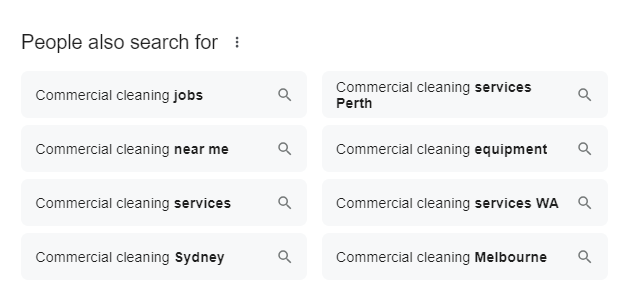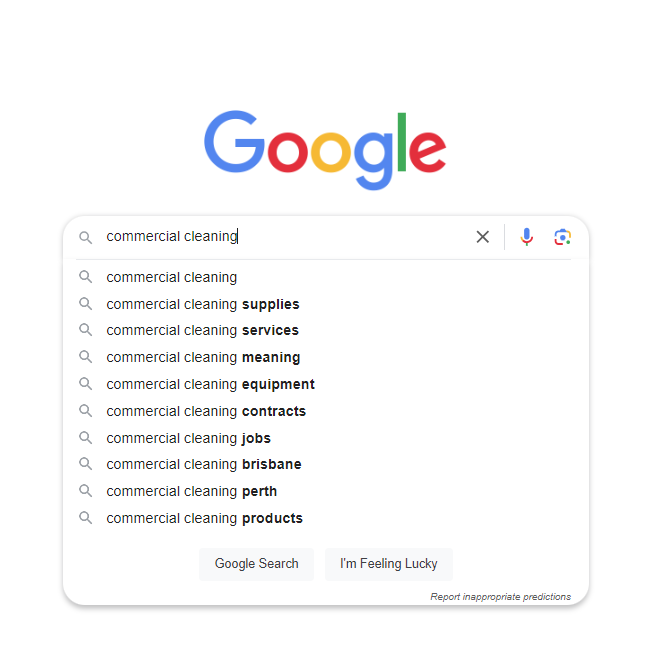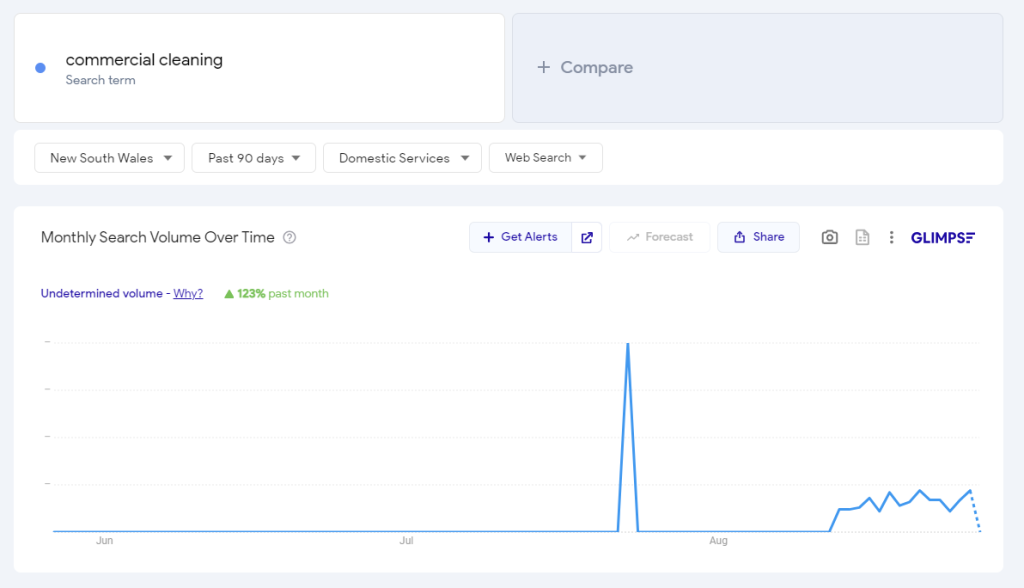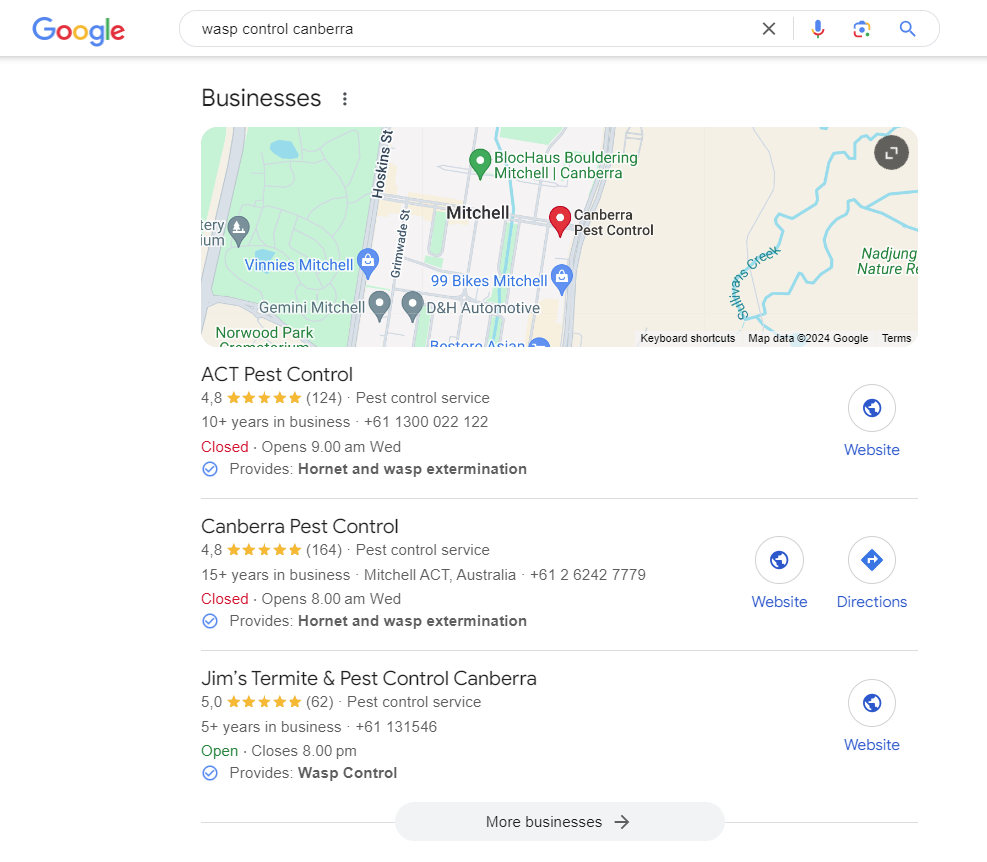You know local keyword research is important. According to the latest study by SOCi, 80% of consumers go online multiple times a week to find nearby businesses.
So how do you find the best keywords to use? Lucky for you, it’s simpler than you might think.
Think of keywords as the foundation of your online presence, made up of three key elements: a modifier, a core term, and a location.
Sound tricky? Don’t worry—this article will walk you through the process of local keyword research using these components to enhance your visibility.
1. Identify Your Industry Keywords
Start by considering what you offer and which services or products you want to promote. Create a list of keywords related to your business.
If you need some inspiration, try Googling your main service (like “commercial cleaning”) and check the “people also search for” section at the bottom of the page for ideas.

Another tip: Begin typing a keyword into Google and see what auto-suggestions appear—these are popular searches!

Once you have a list of keywords, find out how often people are actually searching them every month.
You can use tools like Ubersuggest, Google Keyword Planner, or Google Trends to get this information. You could also use Ubersuggest to analyse competitor keywords and see if it’s feasible to overtake them in the rankings.
2. Use Keyword Modifiers
Keyword modifiers help you target specific searches more effectively, driving targeted traffic and better results from your local SEO efforts.
For example, if you’re writing an article for a cleaning service about choosing the right cleaning products, instead of just targeting “cleaning products,” you could use modifiers like “best,” “eco-friendly,” or “for pet stains” to reach people searching for specific types of cleaning solutions.
3. Add Your Location
Now, it’s time to add some local flair! Think about all the ways people might refer to your location. This could include the name of your city, suburbs, or nearby landmarks. Don’t forget to include variations like abbreviations or nicknames.
Incorporating these local keywords into your content and metadata signals to search engines that your content is relevant to local searches. Tools like Google Trends or Ubersuggest can help you find trending local keywords or those popular with your competitors.

4. Understand Search Intent
People search online with a specific goal in mind. Are they looking to buy, seeking more information, or just browsing? This is known as “search intent.”
Knowing the search intent allows you to tailor your keywords and content to meet those needs more effectively.
Here are a few examples:
- Navigational: Users are looking for a specific website (e.g., “netflix customer service,” “facebook login”).
- Transactional: Users are ready to buy (e.g., “emergency plumber sydney available today,” “Buy bridle deliver to perth”).
- Informational: Users are seeking information (e.g., “What to check before buying a used car,” “Is snorkeling in bali safe”).
- Commercial Intent: Users are considering a purchase but need more information (e.g., “Best pre theatre dining melbourne,” “Affordable electrician in bardon”).
Understanding your customers’ intentions helps you craft keywords that match what they’re looking for.
Using Competitors for Your Local Keyword Research
Can you leverage your competitors’ keywords? Absolutely! Studying their strategies can provide valuable insights for your local keyword research. It’s like getting a peek into their playbook to see what works and where you can outperform them.
Here’s how to analyse your competition and use their tactics to your advantage:
- Check the SERP
Search for your target keywords on Google. Competitors consistently ranking at the top are worth examining.
- Analyse Their Content
Look at what types of content they’re focusing on, whether it’s blog posts, local news, or testimonials. See how they’re using your target keywords and identify opportunities to create even more engaging content.
- Examine Their SEO Strategies
Pay attention to their on-page SEO, including title tags, meta descriptions, and header tags. Have they optimised their Google Business Profile? Understanding their strengths and weaknesses can help you develop a strategy to surpass them.
- Identify the Gaps
What keywords or content types are they missing? Are there opportunities they haven’t explored? Finding these gaps can give you a competitive edge.
For example, if you’re researching the keyword “wasp control canberra,” check out the top search results.

By analysing these results, you can learn about your direct competitors: their strengths, weaknesses, and overall online presence. For example, if many top results showcase their coffee with attractive visuals, consider focusing on your unique atmosphere, baristas, or customer experience through high-quality photos and videos.
Also, look at how your competitors are using their Google Business Profile listings. Positive reviews and great photos help build credibility and attract new customers.
Remember, it’s not about copying; it’s about learning from what works and doing it even better!




